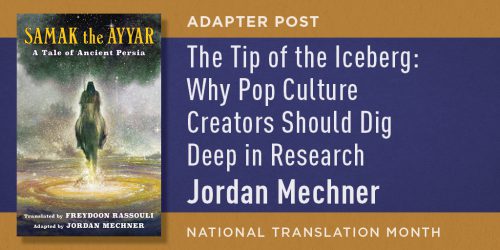Stephen Starr on the complicated situation in Syria
“[I]t is activists’ videos appearing on television stations around the world that have shaped our thinking and opinions on Syria. The conflict becomes black and white when viewed through such a lens: Assad’s regime is wrong and the rebels are right. The truth, of course, is more complicated than that.”
–Stephen Starr
Monday, Foreign Policy posted “The Fog of Civil War,” an article on the complex and frequently misrepresented civil war in Syria by Stephen Starr. Starr is a freelance journalist who has lived in and reported from Syria since 2007, and the author of the forthcoming Revolt in Syria: Eye-witness to the Uprising. Starr has written about the Syrian uprising for the Washington Post, Financial Times, the London Times and the London Sunday Times, Los Angeles Times, and the Irish Times.
Starr begins his article with the story of protests in Jdaydieh Artouz, a story that he believes has been distorted in the public imagination:
In Jdaydieh Artouz, a town 11 miles southwest of Damascus that is home to a mix of Sunnis, Christians, and Alawites, protests have been taking place almost daily for well over a year. Yet the security forces, centered at a police station a few hundred yards up the street from where the protesters regularly gather, have largely ignored them. One wet, cold January night while out to pick up some sharwama sandwiches, I watched cars with Bashar al-Assad’s face emblazoned across the rear window pass within inches of the indomitable demonstrators. Neither side appeared perturbed. With the exception of isolated incidents in which several protesters were killed, the town remained peaceful throughout the uprising — that is until Thursday, July 19, when rebel fighters fired RPGs at the police station, killing five officers.
Living in this town for the first 11 months of the uprising, I tried, and failed, to get articles published questioning why the regime tolerated protests or allowed free assembly in some areas, but not others. These incidents didn’t fit the narrative that all protests were being violently quashed. The majority, of course, were — and often brutally — but the full picture was unnervingly complex.
Yet because anti-regime activists succeeded where I did not, the story of Jdaydieh Artouz has been distorted, almost beyond recognition. Hundreds of videos uploaded to YouTube present the outside world with the idea that the town was in open rebellion, that it was united in its opposition to the Syrian government.
For those who wonder how reporters could have failed to correct public misapprehensions like the one he describes, Starr points out just how difficult it is for journalists in Syria.
The difficulties of reporting in Syria — particularly in the areas outside Damascus — are obvious. Many noted reporters paid the ultimate price. (Following an assignment last February to an area in eastern Damascus that had seen clashes between rebels and the Syrian army, I chose to leave the country. I had reported the shocking scenes I witnessed there and was growing paranoid that I might suffer the consequences of my trip.)
While living in Syria, I never risked traveling to Homs or Daraa, two of the cities hit hardest by Assad’s forces, for fear of being deported — the fate of many other journalists covering the conflict. As a result, much of Syria remained a black hole for me. I could hear the sound of shells landing in the farmlands around my apartment, but their dull thud carried with them little information about what was happening outside the city.
For Starr, the most concerning aspect of the uprising is the fate of the “silent majority” of Syrians who support neither the government nor the rebels.
Today, the regime is openly espousing sectarianism (for example, it has supplied weapons to Alawites living in the Mezzah 86 area of Damascus), but so too are Sunni civilians who back the revolt. Alawite civilians in Syria are being murdered for no other reason than their religion. In one case, a female Alawite schoolteacher was singled out on a social media website and later killed. (Her death was celebrated on Facebook hate pages that were later taken down.) One Syrian working in the international press told me that Sunnis and Alawites can no longer live together, that some Alawites should be pushed back to the mountains of western Syria….
But there is an even deeper division opening up in Syria that has been overlooked because of the difficulties of reporting the conflict. It is the division between the activists and rebels who are hammering away at the Assad regime and those who simply want a quiet life — regardless of who is in government. The complexity of the situation was perhaps best summed up by a 28-year-old dentist I spoke to in Damascus last January: “We hate the regime, but we want peace,” he said more than once. “The regime is better than civil war.”
The complicated nature of the Syrian conflict, coupled with the obstacles faced by reporters, has favored a simplistic portrayal of events. But the reality is that many Syrians back neither the regime nor the revolt. They are Syria’s silent majority, and they will likely pay a heavy price for the uprising that has been billed as a showdown between good and evil. The Assad regime instigated this revolt — it chose guns over dialogue — but its legacy of divisiveness has since taken on a life of its own. Too often now, it is Syrians killing Syrians, but reading the news you might never know.



